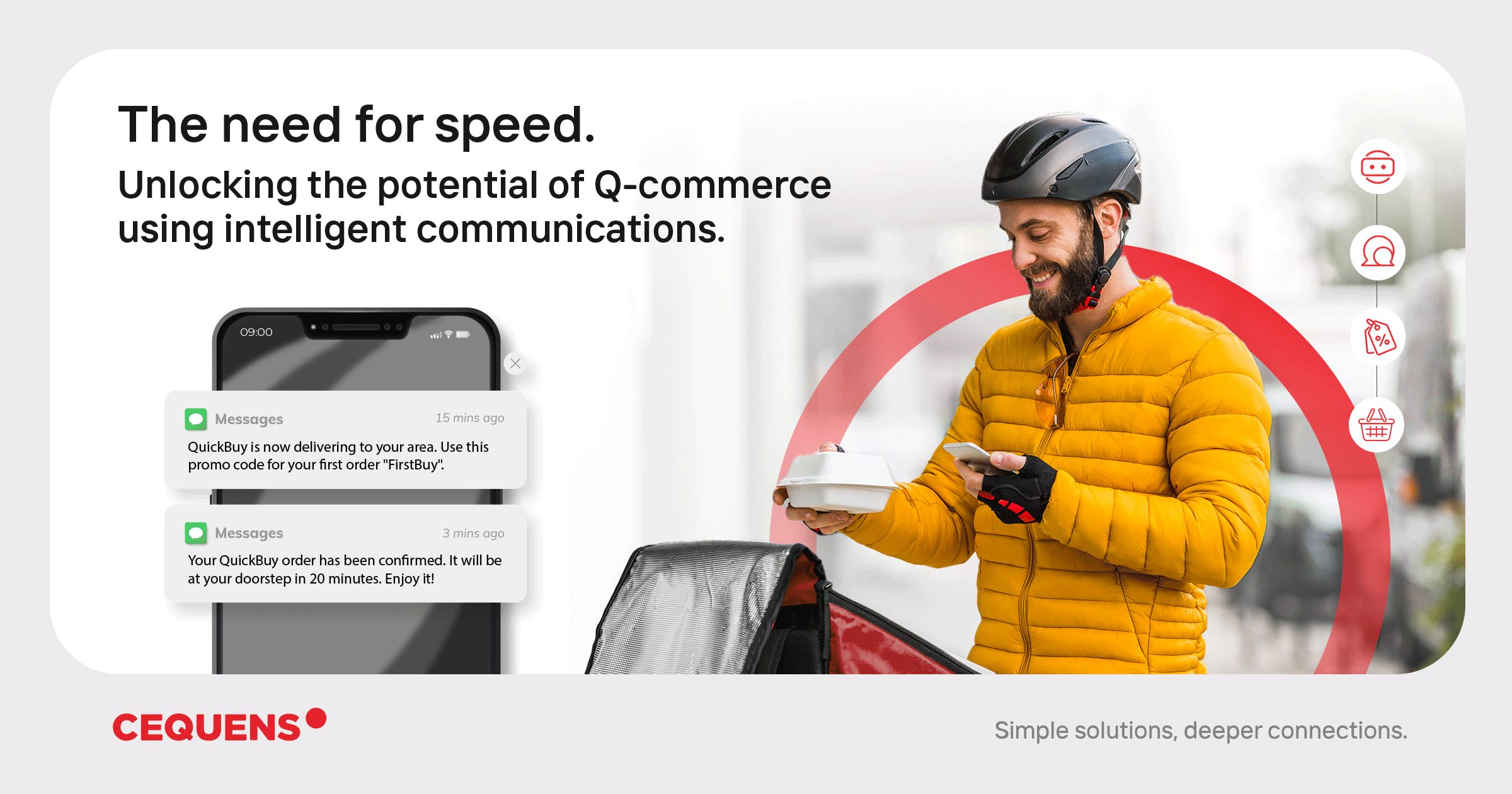We live in an era of instant gratification. The demand for instant noodles, instant pots, instant coffee, and, of course, instant messaging is all on the rise. Consumers expect speed and responsiveness at every touchpoint with every business they deal with. And some businesses, made speed their business (pun intended).
When it comes to shopping, consumers' patience is on the decline, and many retailers have been lagging. This is where Q-commerce (also known as quick commerce) came into our lives, fast-tracked by the COVID-19 pandemic and the need for improved convenience. Q-commerce is anticipated to grow by 24% between 2020 and 2024 to reach $20 billion in the MENA region.
Q-commerce vs E-commerce
Q-commerce is a type of e-commerce that focuses on delivering goods to customers within a very short timeframe, typically within 30 minutes or less. E-commerce, on the other hand, is a broader term that refers to any type of online shopping.
Here is a table that summarizes the key differences between q-commerce and e-commerce:
|
Feature
|
Q-commerce
|
E-commerce
|
|
Delivery time
|
Very short, typically within 30 minutes or less
|
Can take hours or even days
|
|
Product selection
|
Typically limited to essential goods, such as food and household items
|
Can include a wide range of products, from clothing and electronics to furniture
|
|
Pricing
|
Can be higher than traditional brick-and-mortar stores
|
Can be lower than traditional brick-and-mortar stores
|
|
Convenience
|
Very convenient for customers who need goods quickly
|
Convenient for customers who want to shop online
|
Both q-commerce and e-commerce have their own advantages and disadvantages. Q-commerce is more convenient for customers who need goods quickly, but it can be more expensive. E-commerce is more affordable, but it can take longer for customers to receive their goods. The best type of shopping for a particular customer will depend on their individual needs and preferences.
Unlocking the potential of q-commerce using modern communication technology
Q-commerce businesses need to invest heavily in technology, infrastructure, and labor to be able to deliver goods quickly. This can be a significant financial burden for businesses, especially those that are just starting out in such a competitive landscape where it is getting more difficult to stand out. A well-functioning logistics network is also key to being able to deliver goods quickly. This can be challenging, especially in densely populated areas where there is limited space for warehouses and delivery vehicles. Another challenge for such a model is the perceived high delivery fee in relation to the small orders that are placed. This also puts a lot of financial pressure on q-commerce businesses, forcing them to cut down on some other costs.
Despite these challenges, q-commerce is a growing market with a lot of potential. Businesses that can overcome these challenges and deliver a great customer experience will be well-positioned to succeed in this space. To ensure consumers get the convenience they look for, businesses must offer end-to-end, uninterrupted communication that enables customers to make informed decisions and get help whenever and however they need it.
Here are five ways q-commerce businesses can improve their customer experience through intelligent communication:
- Automated, personalized marketing: Businesses can launch AI-powered marketing campaigns that reach their potential and existing customers on the channel of their preference, whether SMS, chat apps, email, or voice messages. By leveraging AI and location-based data, these messages will be based on the customers’ individual interests and location, ensuring increased customer engagement and higher conversion rates.
- Delivery tracking in real-time: Using AI-driven chatbots, customers can inquire about the status of the order and get real-time updates on their delivery details. In addition, automated solutions can send push notifications and reminder messages to customers to let them know that their orders are arriving shotly.
- Fraud prevention and secure checkout: An advanced multifactor authentication solution can ensure secure checkout using OTPs sent over SMS, WhatsApp or email to prevent fraud and secure customer data.
- Customer service and support: Live chat powered by AI and ML can help customers resolve any issues instantly through their preferred channel and ensure a smooth, personalized experience. It can also be helpful to provide customers with self-service options, such as a knowledge base or a chatbot. This can help to build trust and confidence with customers, and it can also help to resolve issues more quickly.
- Measure and improve communication: Intelligent data-driven tools can be used to measure the effectiveness of communication efforts. This data can then be used to improve communication in the future. For example, a q-commerce business could track the number of customers who resolve their issues through customer support through a specific chat app.
Leaders in the field can ask themselves some questions that could put them on the track of exceptional success:
- What can I do to make sure I am not wasting my customers’ time?
- How can I leverage modern technologies to increase operational effectiveness?
- Which implementations of AI can enhance experiences when it comes to customer support and last-mile delivery tracking?
- Is my company nurturing relationships that ensure repeat customers and, eventually, advocacy?
In conclusion, intelligent communication is a key enabler of great customer experience in q-commerce. By using intelligent communication, businesses can automate tasks, personalize marketing, track and improve communication, and provide real-time updates to customers. This can help businesses to build trust and loyalty with customers, and it can also help to increase sales and revenue.
.png)

